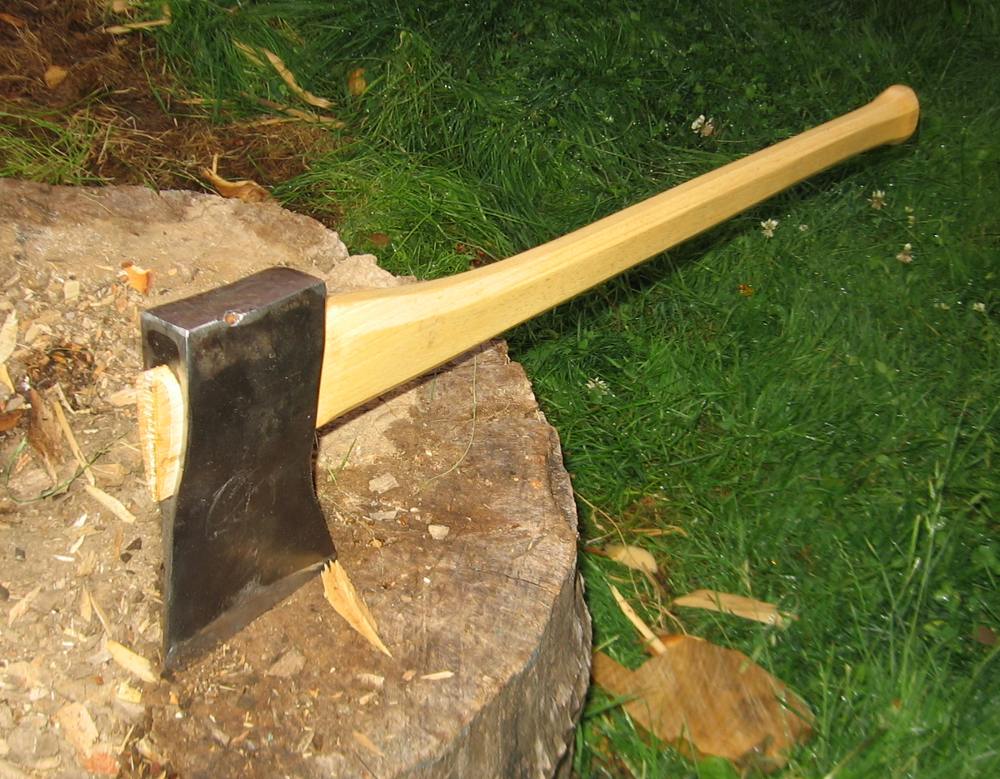- Joined
- Jun 16, 2003
- Messages
- 20,207
Washington. I think. It's from a Washington-based history website.
Ancient Douglas Fir.
Pictures were a great idea, but besides this one I keep finding double-bits.
The BladeForums.com 2024 Traditional Knife is available! Price is $250 ea (shipped within CONUS).
Order here: https://www.bladeforums.com/help/2024-traditional/
Washington. I think. It's from a Washington-based history website.
See for yourself. Just some hardware store trash here ordered up by the purchase order clerks.

.....tube steel and fiberglas in all manner of curved shapes that are supposedly more ergonomic. Or at very least they are sexier-looking and more enticing to gullible consumers.
Nice shot. Pattern maker that's been smoking something to steady his nerves!Some of the stuff out there now is just plain goofy.
Case in point:

I can't help thinking the ergonomics alone don't give an accurate or a complete reasoning for choosing a curved over straight handle. It explains a lot about the nature of the grip is all but not about the hand/eye relationship where a straight handle seems to me to provide a more direct mediation between the intension and the result.

I think it's possible, maybe even likely that a straight handle provides more accuracy than a curved handle. Whether a small gain in accuracy trumps a small gain in ergonomics will depend on the user. Most are able to adapt their aim to the a curved handle. A test for this could be devised - something I've never seen done before.
Let us know how it feels in use.
More on this test idea. If a fellow took a peeled log and laid out marks down each side then he could test his accuracy with straight and curved handles. On one side he would swing at each mark with a straight hafted axe. On the other with curved hafted axe. The distance that each blow missed it's exact mark by would be added up and averaged. If a man did this on several logs or if several men all did this then a clearer picture would soon emerge.
This angle can be illustrated by imagining a straight line connecting the apex of the cutting edge and end of the inside edge of your handle.
E.DB.
I think it's possible, maybe even likely that a straight handle provides more accuracy than a curved handle. Whether a small gain in accuracy trumps a small gain in ergonomics will depend on the user. Most are able to adapt their aim to the a curved handle. A test for this could be devised - something I've never seen done before.
See for yourself. Just some hardware store trash here ordered up by the purchase order clerks.

....Perhaps the local 'smith' convinced these entrepreneur (read; sucker) boys about what to buy
I don't know if this has relevence to the accuracy of a straight or curved handle on an axe, but I got to thinking about a claw hammer. Like a single bit axe it has a single striking face on the head. It's used to make accurate blows. You don't want to bend the nail, miss the nail and dent your stock, or worse wack a finger. Yet, I've never seen one with anything other than a straight handle.


It's pretty simple as far as I'm concerned. One of my felling axes, for example, won't have a curved handle, because in felling the ergonomic wrist angle is not really a factor. I can take a step forward or a step back, bend my legs or straighten my posture to change my approach to cutting the notch. An open hafting angle is fine for felling as well, since I want it open to be able to clean out the whole notch and present the whole cutting edge. It's when you are forced, most commonly through chopping a log under your feet, that having the features that facilitate wrist ergonomy is more important because you can't take a step forward or back or otherwise adjust other factors to make your wrists not over extend. But to use it as a justification for the curve at the end of the handle seems like an over simplification to me.
